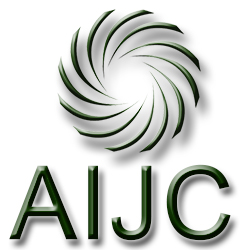
AIJC Study Pushes for Course in Journalists’ Safety in Schools
Natural disasters, terrorism, epidemics, murder, harassment, cyber attacks—these are risks faced by journalists in the line of duty, and yet they receive little or no training in safety and protection, according to a current survey on journalism education by the Asian Institute of Journalism and Communication (AIJC) in Manila.
AIJC surveyed 19 schools with confirmed enrollments in college journalism programs in school year 2016-17 and found that not one of them offered a distinct and separate course in Journalists’ Safety.
In pointing to this gap, the AIJC research team, led by principal author and AIJC president, Ramon Guillermo R. Tuazon, argued: “There is a need for journalists to be safe and protected in order to exercise freedom of the press and contribute to building a democracy.”
 The team also pointed out that “standard journalistic principles and practices can make journalists vulnerable to unsafe situations” and that “it is necessary to include basic safety competencies among the core competencies in the journalism curriculum, to help ensure a safer future for the next generation of journalists.”
The team also pointed out that “standard journalistic principles and practices can make journalists vulnerable to unsafe situations” and that “it is necessary to include basic safety competencies among the core competencies in the journalism curriculum, to help ensure a safer future for the next generation of journalists.”
This is especially true in the Philippines, they added, “considering the frequency, intensity and magnitude of the problem” of widespread violent attacks against journalists.
Sponsored by UNESCO, the UN agency with a mandate to defend and promote freedom of expression and of the press, the research combined desk review with interviews of 21 academics and media professionals.
AIJC also attended or organized national and international forums on the safety and protection of journalists to widen its perspective on the subject.
The resulting research document, “Integration of Safety of Journalists in the Curricula of Philippine Journalism Schools,” includes a draft syllabus which AIJC hopes to distribute to all journalism schools with an endorsement by the Philippine Commission on Higher Education (CHED), said Tuazon, who also sits as chairman of the CHED Technical Panel on Communication.
The suggestion is to offer it as a core, required or elective subject with a three-unit credit.
The syllabus draws from three international documents as benchmark or models: UNESCO Model Journalism Curricula (2007); Tartu (Estonia) Declaration of the European Journalism Training Association (2004) and Core Skills for the Future of Journalism (2014) by the Poynter Institute for Media Studies in the US.
The syllabus specified 48 safety “competencies” (or set of related knowledge, attitudes and skills) “that undergraduate students taking journalism should acquire.”
Here are some of the 48 competencies, clustered under 10 areas:
- General Safety (how to report all types of threats, harassments, etc., to appropriate institutions–state authorities, media NGOs and human rights bodies)
- Risk Assessment (knowledge of risk assessment tools and types of risks and threats)
- Physical Safety (maintaining physical safety while covering hostile situations, such as protests, civil unrest and wars; and disasters, like floods and earthquakes)
- Safety Tools and Equipment (high frequency radio, protective clothing, tear gas goggles, etc.)
- Psychosocial Safety (survival techniques in hostile/traumatic environments; knowledge of causes, symptoms, prevention, management and care, and effects of trauma and Posttraumatic Stress Disorder)
- Economic Safety (importance of life, accident and travel insurance; social security; benefits to family, access to finances in emergency/hostile situations)
- Digital Safety (digital/online risks/threats, including sexual cyber harassment; online privacy, basic digital safety features in electronic devices, digital threats to physical safety including intimidation and harassment; digital safety techniques)
- Language and Image Sensitivity (use of cultural, religious and gender-sensitive language and images in newsgathering, writing and production)
- Ethical Safety (understanding Journalists Code of Ethics, Canons of Good Taste, other ethical guidelines; ethical issues involved in humanitarian, hostile and conflict situations)
- Legal Safety (UN Human Rights Law, Philippine Bill of Rights, media/privacy/cyber laws, international protocols on rights of journalists and civilians during conflict situations; UN resolutions, Geneva Conventions, criminal and civil procedures)
All 21 survey respondents agreed that traditional classroom methods should be complemented with student interactions with practicing journalists, preferably those who have handled dangerous assignments.
And all of the eight school heads said that practicing journalists must be the ones to teach the subject of Safety. — (By Celia E. Acedo, Silliman University Research and Environmental News Service)


